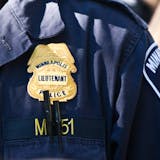NEW YORK — It was footage from surveillance cameras that told police that the man they suspect of killing an insurance executive on Wednesday had arrived in New York City on a bus more than a week before.
Surveillance footage showed the methodical execution of Brian Thompson, CEO of UnitedHealthcare. It led the police to the physical evidence at the core of their investigation, including the backpack that officers found in Central Park on Friday evening.
And it was the absence of surveillance video of the man thought to be the assassin that Friday finally yielded the news that he had most likely fled the city for parts unknown shortly after the shooting.
Hundreds of times over the course of 11 days, the man believed to be the killer, whose name remains a mystery to authorities, appears before one of the 60,000 cameras to which police investigators have access, a senior law enforcement official said Friday.
At 10:11 p.m. Nov. 24, he arrives at the Port Authority Bus Terminal on a Greyhound whose route started in Atlanta. He smiles for a desk clerk at a hostel on the Upper West Side. Around 6 a.m. Wednesday, he stops at Starbucks to buy water and snacks. After Thompson is shot by the entrance of the New York Hilton Midtown hotel at 6:44, the man flees on a bicycle, enters Central Park at 6:48, exits it a mile away at 6:56, strolls along the Upper West Side at 6:58 and catches a cab heading uptown precisely at 7 a.m. It’s all on video.
At 7:30 a.m., cameras show him entering an interstate bus station by the George Washington Bridge.
They do not show him leaving.
While investigators believe the suspect left the city, the mountain of visual information he amassed here has helped police create a profile of him that is guiding the investigation in New York and nationwide.


